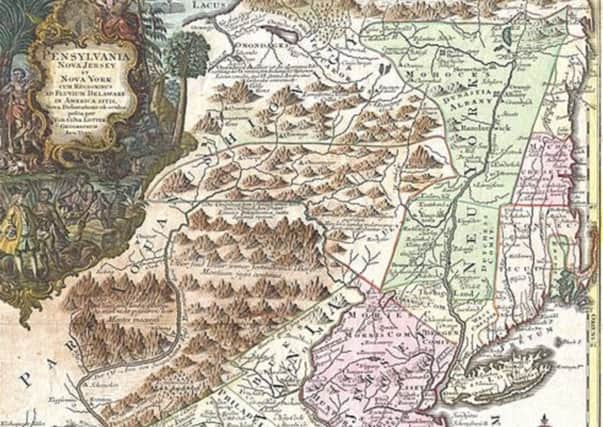The Scottish islanders conned by a new life in New York


Dozens of families from Islay fell victim to the manoeuvres of the royal governors of New York who were accused of roguery, deception and heartlessness in their attempts to attract a new settlement of Protestants to the colony.
Leading the bid to attract Ileachs to this new frontier was Lachlan Campbell, an army officer from the island who led a company of government soldiers during the 1745 rising.
Advertisement
Hide AdHis role in the affair has attracted both condemnation and sympathy.
Some claim he was as deceived as anyone by New York leaders and left substantially out of pocket by his endeavours to take islanders to North America.
Others take a view that he was well aware that the land deal was not quite as beneficial to his fellow islanders as he made out.
But, he was also under the impression that he would receive 1,000 acres for every family he settled with the islander ploughing vast amounts of his own money into the scheme to get them there.
Three ship loads of people from Islay, and some from Jura, arrived in New York province between 1738 and 1740.
Some families planned to purchase land near Fort Edward, but they discovered after their lengthy sea voyage that all was not as it seemed, according to some accounts.
Advertisement
Hide AdCampbell’s plan was for the immigrants to become tenants on his land, instead of free landholders, but many of the islanders had sold nearly all of their possessions to pay for their own passage to New York, and were not content to become mere vassals for Campbell, one account said.
Other accounts detail how Campbell, after returning his third voyage from Islay, found that he no longer enjoyed the same countenance or protection from those running New York,
Advertisement
Hide AdHe was told there was no land either for himself or the people with one account detailing the sudden high fees required to complete the transactions.
Some of the passengers went on to demand individual grants for themselves “yet more of them never had so much as a foot of land, and many listed themselves to join the Expedition to Cuba,” JP MacLean wrote in An Historical Account of the Settlements of the Scotch Highlanders in America.
Many of the islanders went on to pursue alternative routes into American life.
One, Ronald McDougall of Port Charlotte, chose to remain in New York, and worked on a dairy farm on Manhattan Island which went from strength to strength.
Ronald’s son, Alexander went on to become a charismatic street leader in the Sons of Liberty, which demanded more rights for colonists and opposed taxation by the British Government.
He then became a Major General with a key role in during the American War of Independence and the first chairman of the Bank of New York.
Advertisement
Hide AdCampbell, meanwhile, reportedly died of a broken heart, according to MacLean. After buying up a small farm 70 miles north of New York for his children to live on, he returned to Scotland to fight the Jacobites in 1745. Two years later he returned to America, where he died not long after.
His children carried on his fight to get what was both promised to their father and to the islanders who followed him across The Atlantic.
Advertisement
Hide AdAccording to MacLean, the justices deal to Mr Campbell were ‘more of less notorious’ in the province.
“It was generally felt there had been bad treatment and there was now a disposition on the part of the colonial authorities to give some relief to his sons and daughters.”
They were awarded 47,450 acres in total with their campaign encouraging other Campbell settlers to press for their land,
More than 100 emigrants and their descendants were given some property in the township of Argyle in 1764 - more than 20 years after they first set sail.
He had “applied to the New York authorities for a huge estate of about 3O,OOO acres [referred to as the Argyle Patent], much of which he was to own and manage” (MacDougall, 1977, p. 5). Campbell’s plan was for the immigrants to become tenants on his land, instead of free landholders, but many of the Highlanders had sold nearly all of their possessions to pay for their own passage to New York, and were not content to become mere vassals for Campbell.
The newly immigrated Scots consequently chose to pursue alternative means of settling into America. Ronald McDougall chose to remain in New York, and worked on a dairy farm on Manhattan Island. The farm became one of the primary suppliers of milk to the area, bringing relative prosperity to the McDougall family. Young Alexander helped his father deliver milk in the city, spawning his interest in trade and commerce at an early age.